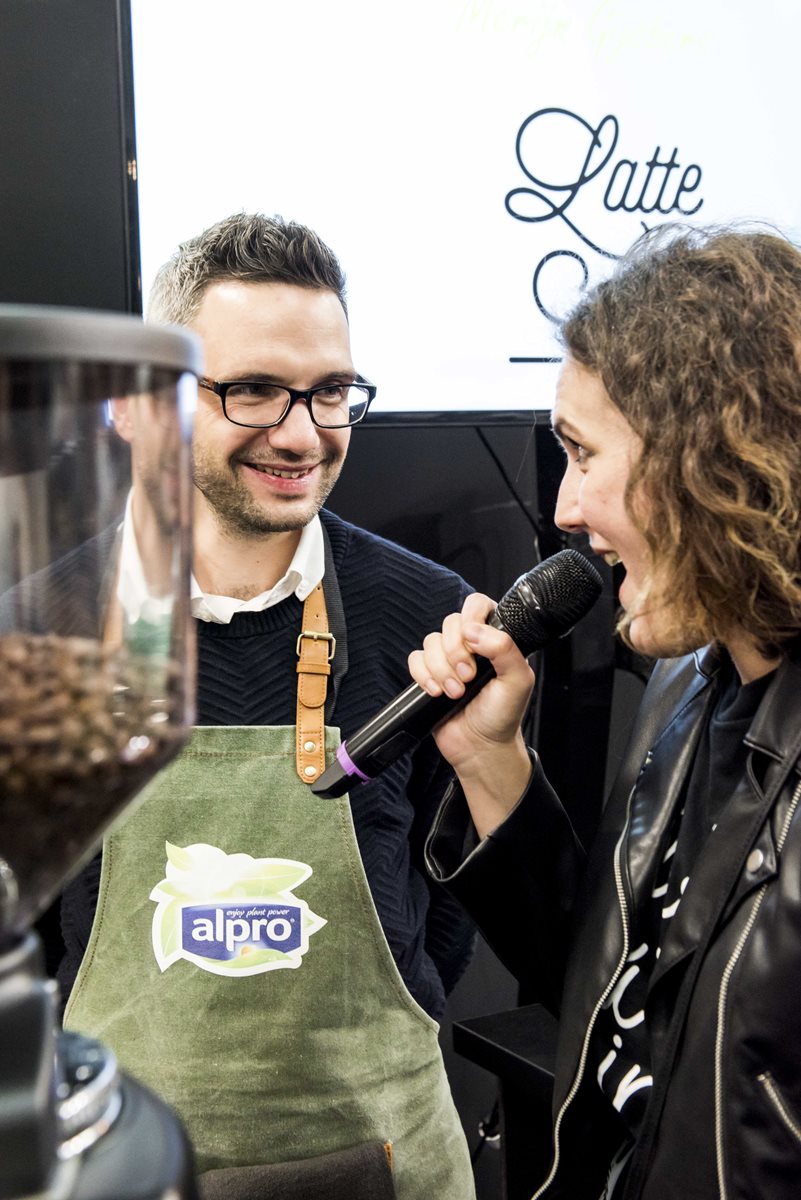Why do you think plant-based milk products are so in-demand in the coffee industry?
Research shows that if we continue to consume food and beverages the way we are today, we will need the resources – by 2030 – of two planet Earths to provide for our global population. So people are switching, increasingly, to a more plant-based diet that can be traced from sustainable sources; such as where water comes from rainfall and no deforestation has occurred. Also, people are more educated and health conscious than ever before and a higher plant intake translates into a reduction in sugar and saturated fat. But the most important driver of this change is the quality of the plant-based products now available and how perfectly they work in coffee from both a taste and a technical perspective.
How is Alpro’s milk created?
It all starts with selecting the right ingredients, which must be of a high quality but have a sustainable origin. After that, we create a base paste of the protein –be it soy, almond or coconut. The next step is to mix the paste with water and tweak the recipe to suit the taste of the consumer.
Alpro works closely with baristas on its “For Professional” products because they must foam well, can't curdle when added to an acidic coffee and you should be able to pour latte art with them.
Which four tips enable the best latte art from plant-based milk?
• Start by warming up the milk but to no higher than 40°C;
• Less is more – don’t stretch it too much;
• Keep your steam wand under the surface once you reach 40°C; and
• The best latte art is created at between 50 and 55°C, so don’t allow the milk to become any hotter.

How is a rosetta, or other pattern of your choice, made using latte art?
There are several techniques to creating such patterns. I prefer to tilt my cup with the espresso in it and to create a base canvas by pouring through the crema from about 10 cm above the cup – until it is about two-thirds to three-quarters full. Then I stop for a moment, bring my jug closer to the surface and start working on my desired pattern.
What is your favourite plant-based hot drink and why?
That's a hard choice. It completely depends on the time of day and the coffee I'm wanting to drink. Soy is the most neutral and nutritious ingredient, so that is often my morning-cappuccino choice. But my most memorable plant-based white coffee was an espresso macchiato made with washed Colombia coffee and Alpro Coconut “For Professionals”. It had a pure-strawberry taste!
What health benefits can consumers expect when they make the switch to Alpro?
Alpro “For Professionals” has 30 to 45 percent less sugar than dairy milk and is low in saturated fat. In some recipes, like coconut-iced lattes, you can even leave out the extra sugar-syrup you may normally add. And the good news is you can use it for more than just coffee. I put it in smoothies, curries, hot chocolate and on pancakes. I look forward to discussing all this and more with visitors to the Cape Town Coffee Festival this weekend!